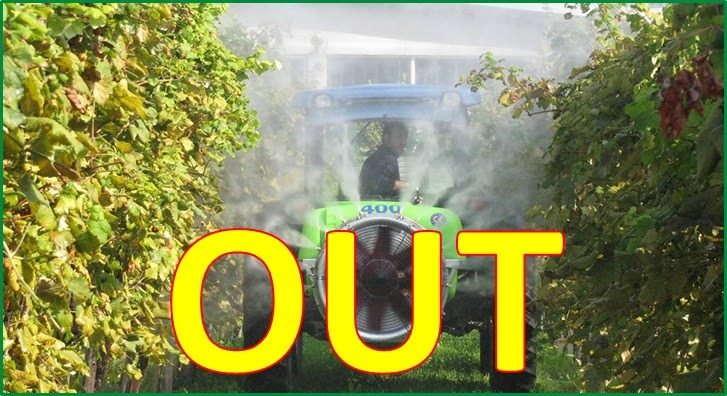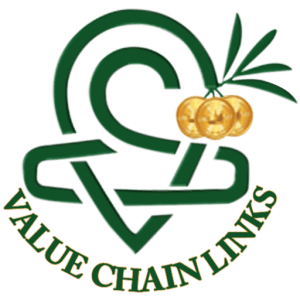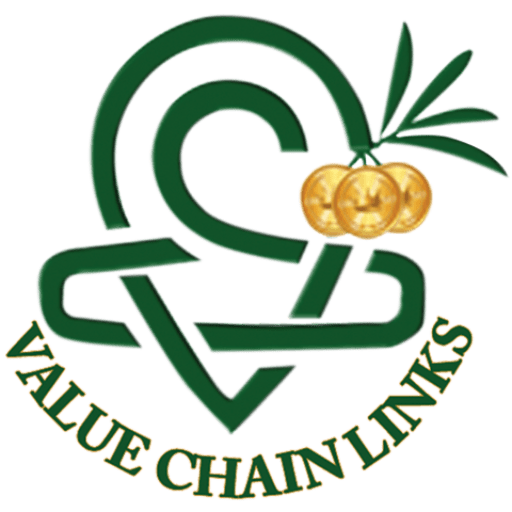WHY IS CROP PROTECTION “OUT” AND WHAT IS “IN”?

BY DR. NIMROD
Forty years ago, still a teenager, I was eager to get on the tractor and start spraying. At that time, spraying seems to be a gadget, the ultimate solution to all problems involving pests, and considered as; manly, advanced, and the pinnacle of human achievements.
Ten years later, I became a crop protection officer and in charge of harvesting over 1000 tons of high-quality produce. This is when I first became aware of the traditional crop protection spray-oriented approach, painful limitations.
I recently saw a post by Bayer Company that made me rethink about how and if those giant crop protection companies are relevant to cope with today’s challenges.
You see, thirty years ago people bought food, and it was enough if it was eatable and being tasty was a bonus.
Today, when consumers go to supermarkets, they view their purchases as a statement of their values. The following is a partial list of nowadays “consumers’ value statement” –
 Free of chemicals/pesticides.
Free of chemicals/pesticides. Free of biosecurity issues.
Free of biosecurity issues. Free of pests.
Free of pests. Grown while thinking about the environment.
Grown while thinking about the environment. Farmers’ health is not compromised.
Farmers’ health is not compromised. Fare Trade – farmers, are well treated socially, financially, etc.
Fare Trade – farmers, are well treated socially, financially, etc. SDGs – UN Sustainable Development Goals.
SDGs – UN Sustainable Development Goals.
The list of Values that consumers hold dear, and turned into clear expectations and demands, goes on and on.
As a result, numerous brands, trade names, and protocols were developed by companies and organizations to offer consumers to produce the answers to the new stringent requirements.
These changes created problems mainly in the poor, unprepared, and less organized emerging economies, e.g., Africa. In contrast, Latin American countries seized the opportunity and increased exports to the premium markets of the EU, the USA, and China.
It is interesting to note that meeting the new requirements was sometimes done while compromising other vital characteristics. A good example is the mango industry, where fruits had to be harvested prematurely and before the rainy season to avoid fruit fly infestation. That resulted is a shorter marketing season, smaller and less colorful fruits, lower quantities to market, and sub-optimal taste and smell, leading to market loss and lower prices.
THE NEW ROLES
For today’s farmers, the world, and its economic prospect, divide into two types of futures;
Farmers who are limited to market only at the domestic/local market. This is typical for farmers in emerging economies. They are characterized by using sprays as means to solve crop protection practical problems. Their produce quality and yield are low, and so is their income. With no leverage, they are doomed to remain poor and maybe become poorer.
Hallmark, such farmers, focuses on the TECHNOLOGY, e.g., insecticide sprays/traps for killing the pests. Note that riding off pests does not mean they can exports.
Farmers who can export to premium markets. This type of farmer follows strict protocols, which instruct them how to perform various activities, which consumers care about. Their produce quality and yield are high, and so is their income.
Hallmark, such farmers, focus on the PROTOCOL, e.g., Global Gap, which means opening markets. Note that riding off pests does not take them to export markets, as well.
WHERE SHOULD WE FOCUS?
Let’s make it clear if you have enough money; you will never be hungry!
Why? Because there is enough food in the world for those who can pay for it!
It means that our focus should be on how to increase farmers’ income.
EXPECTATIONS
Now let’s see what happens when the farmer focuses on crop protection Technologies versus Protocols.
Focus on Technologies – the farmer expects the technology by itself will result in more effective control and be less costly. The farmer hopes to; “kill more pests for a lower cost.”
Focus on Protocols – the farmer is expecting the protocol will result in opening more profitable markets. The farmer is saying to himself, “I will increase my income.”
OLD SCHOOL APPROACH
When you focus on the Technologies, you focus on the pest per se and how much you will save using an alternative solution. However, when focusing on the Protocols, you focus on the consumer and how much more income you will make by shipping to premium markets.
Bayer, an old crop protection company, wrote to me, “we will reduce the environmental impact of crop production by 30% by 2030.”

| By focusing on technical aspects, which I doubt if anyone can indeed measure, such companies focus on what they know to do best; producing chemicals to kill pests.Let’s assume that ten years from now, Bayer will reduce its environmental impact by 30%. How is that helping mango growers that suffer today 50% to 80% fruit fly damage? Thirty percent reduction is far from being sufficient today; so how will it be sufficient ten years from now?Here are a few more questions that Bayer and all other crop protection companies, in reality, poisonous chemical companies, “skipped” mentioning –• Is the 30% reduction relevant for all farmers or limited to advanced ones? • Will effectiveness also reduced from its already low rate (50% fruit loss by fruit flies)? • Will the new sprays have – zero chemical residues? Probably not. • Will the new sprays create – zero environmental impact? Probably not. Expecting to reduce by only 30% means that 70% will continue to harm the environment. • Will the new sprays pose – zero risks for humans? Probably not as it is reduced by only 30%, and 70% will remain. • Will the new technology be – up to the health/biosecurity/environmental regulations ten years from now and beyond? • To be practical, currently, mango growers in Africa and Asia are losing 50% of the produce to fruit flies and other pests. This happens today when the restrictions are less severe than expected ten years from now. How much of the yield will the farmers continue to be losing, while using those “new” sprays? • Crop protection companies desperately try to change as they wish to be “accepted” by the public. But will consumers and future protocols approve and accept the “new” sprays, which will continue to discharge poison on the produce, the environment and risk humans’ lives? I look at Bayer’s “promises” for a “greener world,” and it makes me smile. It reminds me of a car company that will promise that in 10 years, the fuel consumption of its vehicles will decrease by 30%, this while we know that in 10 years, the standard will require zero (0) fossil fuel consumption, and switch to electric or hydrogen vehicles. Food for thought;Crop protection companies, which provide technology and pesticides, profit when the farmer buys the pesticide. Hence, their income is assured regardless of the farmer’s future professional and business results.Do you think there is alignment between the goals of both parties? What kind of business model would you suggest? NEW SCHOOLAdvanced farmers and countries who focus on exports and on increasing farmers’ income care not about Pesticides or Technologies but rather about PROTOCOLS.You see, it is simple, farmers who are focused on short-term results invest in pesticides (technology), hoping to save costs and expenses. Meanwhile, farmers who are focused on long-term objectives focus on getting the best protocols to produce the best fruits.Which of the farmers do you think will benefit from higher income in the long run?Protocols are very much like a door key, which opens doors and enables access to markets. However, protocols alone cannot get farmers to premium markets.Advanced protocols already contain references to crop protection solutions, including their application.Investing in Protocols, such as Organic and Global Gap, is one step ahead of investing in technologies. As reality proves, access to protocols only, doesn’t mean a farmer will export, not to mention exporting to premium markets. Food for thoughts;When you, as a farmer, invest in applying a protocol, e.g., Organic or Global Gap, how obligated is the company that approves your protocol to your agri-business success?Do they share, with the farmer, the business risk resulting from this investment? Do they provide critical technologies that will help the farmer to succeed?Is there alignment between the parties’ goals?To answer that question, imagine what the CEO of “Global Gap” will see as a business success. Now think about what a farmer would see as a business success. ALIGNMENT OF INTERESTSFarmers in emerging economies, even the top ones, often find it hard to purchase and apply the leading technologies and protocols.As if that is not enough, too frequently, solutions developed for usage in the EU or the USA are not suitable and ineffective for Africa and Asia.Such is the case with fruit flies in Africa and Asia; until recently, there was no technology nor protocol effective enough to control fruit flies according to premium markets demands’.The low effectiveness of current “leading” technologies and protocols is reflected in the 50% mango (and other crops) loss by fruit flies. As a result, most African/Asian countries are under a fresh mango export ban, and the little that is exported is suffering a high rate of interception.Can you imagine it? Most African/Asian mango growers suffer 50% fruit loss regardless of applying “leading” technologies and protocols. Hence, they are limited to sell their produce only on the domestic markets for much lower prices versus export markets.Why are they limited?Because of the high fruit fly infestation and chemical residues, which result from fruit fly sprays, they are under the Export Ban of fresh mango exports.Wait, how is that possible if they have access to the best Technologies (sprays, pesticides, traps, etc.) and Protocols?Because companies and organizations that supply farmers with the Technologies and Protocols do not share the same goals with them, in other words, those companies/organizations get the money before the season. Hence, they are unaffected by the farmers’ professional and business results.In short, they have no incentive to take care of the farmer’s problems because they don’t share common goals, and their interests are not aligned.Can this be changed?Sure it can.HOW?The “ingredients” to make the necessary change are; Technologies and Know-how, Mutual trust & respect, Alignment of Interests, State of the art Protocol(s), effective Cooperation, and of course, a Business Model that binds it all together and assures results.Is there an example of something like this? Is it doable?Sure, there is an example, and we know it is doable because it works and field-proven.I am talking about the Green Valley Package, which contains the above “ingredients” (Technologies, Know-how, etc.) and much more (as described in the P.S. section below).Most importantly, Green Valley considers the grower as a long-term partner and therefore looks at the long-term mutual benefit and income increase. |

| Green Valley invested a fortune in developing, field testing, and applying the FFCTZ (Fruit Fly Certified Trade Zone, which includes the FreeDome as the core element). And the farmer? |
He is not paying the equivalent of an area-wide fruit fly project, which is tens of millions per country and thousands per hectare. Note that most African mango farmers suffer from no less than three different fruit fly species in their mango orchards.
The farmer continues investing more or less the same as he did before when applying the low-quality, low-effectiveness technologies (sprays + traps + sanitation) and protocols, which caused him suffering and 50% fruit infestation.
NO cost increase and NO investment! Instead, income and profit increase!
The difference in approach is that – with FFCTZ (1) there are no sprays, (2) no traps, (3) no sanitation, (4) no pesticides, and…the infestation is reduced by about 95%.
It is uncommon to get the INDUSTRY’S PERSPECTIVE from a professor in academia. Here, in a conversation with Mr. Dotan Peleg, our business manager, Professor Maxwell K. Billah, expresses his opinion on the Green Valley program. Note how the Professor refers to THE PACKAGE and TRUST [>><<].
I also attach a LinkedIn correspondence with Prof. Billah, following a post titled “Alignment of Interests.”

Green Valley model is simple to explain;
• Assist the farmer in applying the best protocols (which already include the best technologies and know-how).
• Helping farmers to reach better markets, including export markets.
• Achieve the best professional and business results while sharing the downsides (risks) and upsides with the farmer. Note that Green Valley’s initial investment per hectare is over 50% of the total cost upon initiating the program.
Overall, we are talking about a long-term commitment that is established between Green Valley and its farmers. To achieve that end, Green Valley helps farmers reach better markets, including the lucrative export markets.
Now, let’s go back to the beginning of this article, where we said that people in the premium markets are looking to buy more than “food.” Consumers are making a statement by the kind of food, and especially fresh produce, that they buy. Today, the “consumers’ value statement” includes Social, Environmental, and Health elements. For example –
 Free of chemicals/pesticides.
Free of chemicals/pesticides. Free of biosecurity issues.
Free of biosecurity issues.
Free of pests.
Grown while thinking about the environment. Farmers’ health is not compromised.
Farmers’ health is not compromised. Fare Trade – farmers, are well treated socially, financially, etc.
Fare Trade – farmers, are well treated socially, financially, etc. SDGs – UN Sustainable Development Goals.
SDGs – UN Sustainable Development Goals.
“PUSH” VERSUS “PULL” MARKETING STRATEGY
There is a fundamental difference, which profoundly affects farmers’ financial results, if the farmer (producer) is “Pushing” his produce to the market, or the market is “Pulling” his produce.
Farmers Pushing produce to the market results in a price drop, while when the market is Pulling the produce, based on expressed demand, the result is a price increase.
Green Valley model is based on detecting unanswered market demands and support farmers with its Package to answer those demands. It represents a straightforward consumer-oriented approach.

Let’s take that list of the “consumers’ value statement” and ask; which model, i.e., (a) Technology-based, (b) Protocol-based, (c) Green Valley (market)-based, can practically help the farmer reach the premium markets by standing up to the required demands? And one more thing, which is more helpful for the farmer to achieve his personal and family life goals?
Will the crop protection companies help and support farmers throughout the process?
Sure not. They have no business other than to sell more chemicals.
Will the Protocol companies/organizations help and support farmers throughout the process, all the way to the premium markets?
Sure not. They will check the farmer and ensure that he is standing to the protocol, but it is not their business to make sure he gets to the premium markets or any market.
And then, there is the Green Valley business model.
Will Green Valley help and support farmers throughout the process, all the way to the premium markets?
Sure it will. Green Valley model is designed and build to help and support farmers reaching the high-value export markets, and on the way, getting over all the expected and unexpected hurdles. The Green Valley model is designed to cover end-to-end elements to enable fast progress with the partners involved.
This is precisely what makes Green Valley a unique and breaking-through effective, practical and working model.
TAKEAWAYS
» Consumers no longer buy “food”; instead, they make a statement using their money to buy food that reflects their habits, values, and worldview.
» Exports are the fastest and best way to create added value for the farmer and the country.
» Most African and Asian mango growers and others can’t export fresh produce due to their inability to meet stringent market and regulatory requirements.
» Having access to sprays, technologies, and protocols don’t mean that you can access export markets. To this end, farmers need a Full Package, which will take the produce from the field to the most lucrative supermarkets’ shelves.
» A farmer who is not exporting is losing and risking his livelihood and his family’s future.
Bonus tip, aim to be the best. If you fall short, you will “only” be excellent.

